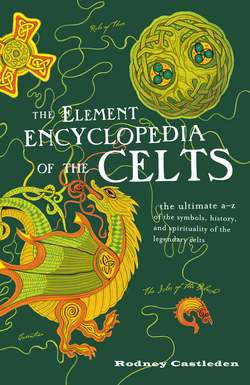Читать книгу The Element Encyclopedia of the Celts - Rodney Castleden - Страница 155
GENEALOGY
ОглавлениеKings and princes were entitled to their privileges by birthright, in other words according to who their mothers and fathers were. They therefore had a strong vested interest in establishing and committing to memory their family trees. No doubt these were transmitted orally for countless centuries and written down only from about the seventh century AD onward, when the process of Christianization made written records much commoner (See Writing). The lack of interference from the Romans in Ireland has meant that more in the way of Irish genealogy has survived.
King lists were drawn up and doubtless recited on special occasions by bards. These were designed to establish the king’s entitlement to his position, and doubtless flattering connections with long-dead heroic figures were added as a matter of course. A considerable amount of invention is involved in some of them. The powerful Irish chiefs of the Middle Ages wanted to be descended from Celtic gods, or from Egyptian pharaohs. But sometimes the names of heroes and kings follow one another in a credible sequence that recurs in other genealogies, and this corroboration inspires more confidence.
According to bardic sources, Slaine the Firbolg was the first High King of Ireland. From the time of his accession to the year 1, there were 107 High Kings: nine Firbolgs, nine Tuatha dé Danann, and 89 Milesians. After the rebellion in the first century AD, the High Kingship was reinstated, and after that there was an unbroken line of 81 High Kings until Rory O’Connor who, in 1175, surrendered his overlordship to Henry II of England.
The texture of the bardic genealogies often shows a shift from the mythic to the historic. Conaire Mor was the son of the bird god Nemglan; by contrast Ollamh Foola, the eighteenth High King, who came to the throne in 714 BC, is said to have provided Ireland with its first law code, which has a more historic ring to it.
